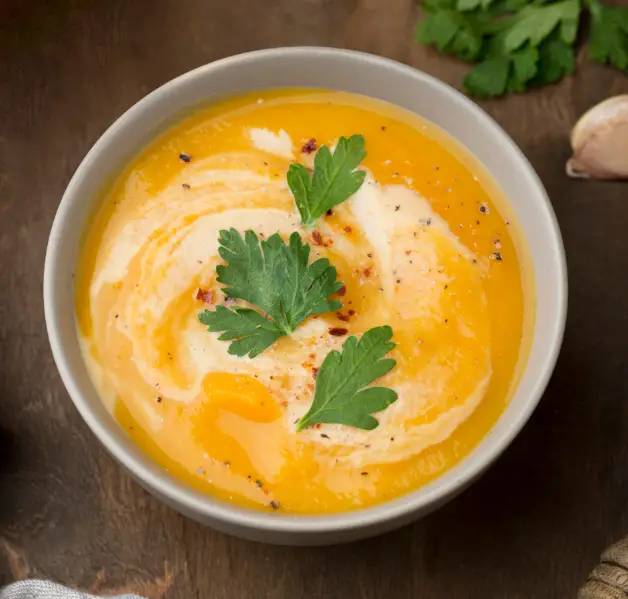Nutritional Wellness Soup: A Heart-Healthy Recipe for Comprehensive Health Support
Maintaining optimal health through nutrition requires understanding how specific ingredients can work synergistically to support various bodily functions. This carefully crafted soup recipe combines ingredients known for their beneficial effects on cardiovascular health, blood sugar regulation, and overall nutritional wellness. While no single food can cure medical conditions, incorporating nutrient-dense recipes like this into a balanced diet may contribute to better health outcomes when combined with appropriate medical care and lifestyle modifications.
Understanding the Health Benefits of Key Ingredients
Pumpkin: A Nutritional Powerhouse
Pumpkin serves as the foundation of this recipe, providing exceptional nutritional value that supports multiple aspects of health. This vibrant orange vegetable is rich in beta-carotene, which the body converts to vitamin A, supporting immune function and cardiovascular health. The high fiber content in pumpkin can help regulate blood sugar levels by slowing glucose absorption and promoting feelings of satiety.
Research indicates that pumpkin’s soluble fiber may contribute to cholesterol management by binding to cholesterol particles in the digestive system and facilitating their elimination. Additionally, pumpkin contains potassium, which supports healthy blood pressure levels, and antioxidants that may help reduce inflammation throughout the cardiovascular system.
The natural sweetness of pumpkin allows for satisfying meals without added sugars, making it particularly valuable for individuals monitoring their blood glucose levels. Its nutrient density provides essential vitamins and minerals while maintaining relatively low caloric content.
Olive Oil: Heart-Healthy Fats
Extra virgin olive oil provides monounsaturated fats that have been extensively studied for their cardiovascular benefits. These healthy fats may help improve cholesterol profiles by supporting healthy levels of HDL (good) cholesterol while potentially reducing oxidation of LDL (bad) cholesterol particles.
The antioxidant compounds in olive oil, including vitamin E and polyphenols, provide additional protection against oxidative stress that can damage blood vessels and contribute to cardiovascular disease. When used in moderation, olive oil can be an excellent replacement for saturated fats in cooking applications.
Garlic and Onions: Cardiovascular Support
Both garlic and onions belong to the allium family and contain sulfur compounds that have been associated with various health benefits. Research suggests that regular consumption of garlic may support healthy cholesterol levels and blood pressure. The compound allicin, formed when garlic is crushed or chopped, has been studied for its potential cardiovascular protective effects.
Onions provide quercetin, a flavonoid antioxidant that may help reduce inflammation and support healthy blood vessel function. These vegetables also add significant flavor to the soup without contributing excessive sodium or calories.
Bell Peppers: Vitamin C and Antioxidants
Red bell peppers are excellent sources of vitamin C, providing more of this essential nutrient per serving than many citrus fruits. Vitamin C supports collagen production, which is important for blood vessel integrity, and acts as a powerful antioxidant that may help protect against cardiovascular damage.
The bright red color of bell peppers indicates the presence of carotenoids, including capsanthin and capsorubin, which have antioxidant properties. These compounds may help reduce inflammation and support overall cardiovascular health.
Ginger: Anti-Inflammatory Properties
Ginger contains bioactive compounds called gingerols that have demonstrated anti-inflammatory and antioxidant effects in research studies. Some studies suggest that ginger consumption may help support healthy cholesterol levels and blood circulation. Its warming properties and distinctive flavor make it a valuable addition to heart-healthy recipes.
Cumin and Paprika: Flavorful Antioxidants
These spices not only enhance the soup’s flavor profile but also contribute beneficial compounds. Cumin contains antioxidants and may help support healthy blood sugar levels according to some research. Paprika provides additional antioxidants and can help reduce the need for excessive salt in flavoring.
Complete Recipe Instructions
Ingredients List
- 1 tablespoon extra virgin olive oil
- 1 medium onion, chopped (approximately 1 cup)
- 2 cloves fresh garlic, minced
- 1 medium red bell pepper, chopped
- 1 teaspoon fresh ginger, grated (or ½ teaspoon ground ginger)
- 1 teaspoon ground cumin
- ½ teaspoon sweet paprika
- 4 cups fresh pumpkin, peeled and diced (or butternut squash as substitute)
- 4 cups low-sodium vegetable or chicken broth
- ½ cup light coconut milk
- Salt and freshly ground black pepper to taste
- Optional garnishes: pumpkin seeds, fresh herbs, or a drizzle of olive oil
Detailed Preparation Instructions
Step 1: Preparation and Setup Begin by preparing all ingredients before starting the cooking process. Wash and peel the pumpkin, removing all seeds and fibrous material, then dice into uniform 1-inch pieces for even cooking. Chop the onion and bell pepper into similar-sized pieces, and mince the garlic finely to ensure even distribution of flavor.
Step 2: Building the Flavor Base Heat the olive oil in a large, heavy-bottomed pot over medium heat. Add the chopped onion and cook for approximately 3-4 minutes, stirring occasionally, until the onion becomes translucent and fragrant. This process, known as sweating the onion, develops the foundational flavors of the soup.
Step 3: Adding Aromatics Add the minced garlic, chopped bell pepper, grated ginger, cumin, and paprika to the pot. Continue cooking for an additional 2-3 minutes, stirring frequently to prevent burning. The spices should become fragrant, and the bell pepper should begin to soften slightly.
Step 4: Incorporating Main Ingredients Add the diced pumpkin to the pot and stir to coat with the aromatic mixture. Pour in the low-sodium broth, ensuring that the liquid covers the pumpkin pieces by approximately one inch. If additional liquid is needed, add warm water or additional broth.
Step 5: Cooking Process Bring the mixture to a rolling boil over medium-high heat, then reduce the heat to maintain a gentle simmer. Cover the pot partially to prevent excessive evaporation while allowing steam to escape. Simmer for 20-25 minutes, or until the pumpkin pieces are tender enough to be easily pierced with a fork.
Step 6: Final Preparation Once the pumpkin is fully tender, remove the pot from heat. For a smooth soup consistency, use an immersion blender to puree the mixture until smooth, or transfer portions to a regular blender (allowing the mixture to cool slightly for safety). For a chunkier texture, blend only half the soup or mash some pumpkin pieces with a potato masher.
Step 7: Finishing Touches Stir in the coconut milk and season with salt and pepper to taste. The coconut milk adds richness and helps balance the spices while providing healthy fats that aid in the absorption of fat-soluble vitamins from the vegetables.
Nutritional Considerations and Health Benefits
Blood Sugar Management
The high fiber content in this soup, primarily from pumpkin and vegetables, can help slow glucose absorption and promote more stable blood sugar levels. The protein content from broth and healthy fats from olive oil and coconut milk further contribute to blood sugar stability by promoting satiety and reducing rapid glucose spikes.
Cholesterol Support
The soluble fiber from pumpkin, combined with the monounsaturated fats from olive oil, may help support healthy cholesterol levels. The antioxidants from various vegetables may help protect against LDL cholesterol oxidation, which is considered more harmful than regular LDL cholesterol.
Cardiovascular Wellness
The combination of potassium-rich vegetables, anti-inflammatory spices, and heart-healthy fats creates a recipe that supports overall cardiovascular function. The low sodium content, when using low-sodium broth, makes this suitable for individuals monitoring their sodium intake.
Iron and Nutrient Density
Pumpkin provides iron along with vitamin C from bell peppers, which enhances iron absorption. This combination can be particularly beneficial for individuals concerned about maintaining healthy iron levels.
Serving Suggestions and Modifications
This soup serves approximately 4-6 people as a starter or 3-4 people as a main course when paired with whole grain bread or a side salad. For additional protein, consider adding cooked legumes such as lentils or chickpeas during the final cooking stages.
The recipe can be easily doubled for meal preparation purposes, as it freezes well for up to three months when stored in appropriate containers. When reheating, add additional broth if the soup has thickened during storage.
Conclusion
This nutritionally dense soup recipe demonstrates how thoughtful ingredient selection can create meals that are both satisfying and supportive of overall health goals. While individual results may vary, incorporating such nutrient-rich recipes into a balanced diet, alongside appropriate medical care and healthy lifestyle practices, can contribute to overall wellness and cardiovascular health.
Remember that significant health improvements require comprehensive approaches including proper medical supervision, regular physical activity, stress management, and consistent healthy eating patterns. This soup can serve as one valuable component of a heart-healthy dietary approach when used as part of an overall wellness strategy.

Adrian Hawthorne is a celebrated author and dedicated archivist who finds inspiration in the hidden stories of the past. Educated at Oxford, he now works at the National Archives, where preserving history fuels his evocative writing. Balancing archival precision with creative storytelling, Adrian founded the Hawthorne Institute of Literary Arts to mentor emerging writers and honor the timeless art of narrative.
